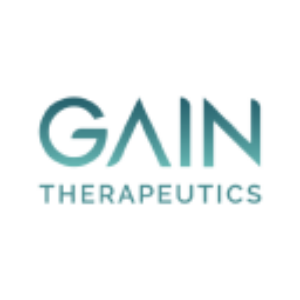Gain Therapeutics Presents Positive Preclinical Data On Its Gaucher Disease Program at IWGGD Symposium
Gain Therapeutics (Nasdaq: GANX) showcased promising data for its lead compound GT-02329 targeting Gaucher disease at the 1st IWGDD Symposium. The compound boosts GCase levels and activity, effectively reducing toxic substrate accumulation in both human and mouse models. Specifically, the data highlighted increased GCase activity and decreases in glucosylceramide (GlcCer) and glucosylsphingosine (GlcSph). The company aims to further investigate GT-02329's potential as a therapy to alleviate neurological effects associated with Gaucher disease.
- GT-02329 demonstrates increased GCase levels and activity in Gaucher disease models.
- Significant reduction of disease-causing toxic substrates in patient-derived fibroblasts.
- Potential to cross the blood-brain barrier, addressing an unmet need for neuronopathic Gaucher disease.
- None.
Insights
Analyzing...
Lead compound GT-02329 increases GCase levels and activity, depletes toxic substrates glucosylceramide (GlcCer) and glucosylsphingosine (GlcSph) in relevant Gaucher disease (GD) models
BETHESDA, Md., May 11, 2022 (GLOBE NEWSWIRE) -- Gain Therapeutics, Inc. (Nasdaq: GANX) (“Gain”, or the “Company”), a biotechnology company transforming drug discovery with its proprietary computational discovery platform identifying novel allosteric binding sites and creating small molecule treatments, today presented additional confirmatory data from its Gaucher disease program. The results were highlighted in an oral presentation at the 1st IWGDD Symposium being held May 8-11, 2022, in the Netherlands. The data show that the tested compounds increase the levels and activity of the beta-glucocerebrosidase (GCase) protein, increase co-localization of GCase with lysosomes, and most importantly, decrease disease-causing toxic substrate accumulation in patient-derived fibroblasts and a transgenic mouse model of Gaucher disease.
“At Gain, we have been applying the strength and precision of our See-Tx platform to developing pharmacological chaperones, small molecules capable of crossing the blood-brain barrier, to prevent GCase protein misfolding and restore enzymatic function within the brain,” said Eric Richman, chief executive officer of Gain Therapeutics. “The data we shared today supports GT-02329 as a potential therapy to mitigate the neurological effects of GD, and we look forward to exploring benefits of this therapy for patients in need further as we advance this compound into the clinic.”
The data was generated in two different in vitro models in wild-type (WT) and patient-derived fibroblasts and in patient-derived dopaminergic neurons, as well as in an in vivo transgenic mouse model harboring the L444P mutation. The presentation titled “Bain-Penetrant Structurally Targeted Allosteric Regulators for Glucocerebrosidase (GCase) Show Promising Pharmacological Activity in L444P Models of Gaucher Disease” showed that the orally bioavailable and brain-penetrant lead molecule has a promising effect, including:
- Increase of GCase activity in WT and GD patient-derived fibroblasts across a number of prevalent mutations
- Significant reduction of GlcCer in the lysosome in GD patient-derived fibroblasts
- Significant increase of GCase activity in the plasma and brainstem and reduction of GlcSph in the plasma in a transgenic mouse model harboring the L444P mutation
A copy of the presentation is available on the Gain Therapeutics website at https://www.gaintherapeutics.com.
About Gaucher Disease
Gaucher disease is an inherited lysosomal storage disease caused by homozygous mutations of the GBA1 gene that result in the misfolding and subsequent dysfunction of beta-glucocerebrosidase (GCase), an enzyme that breaks down fatty chemicals in the body, including glucosylceramide and glucosylsphingosine. Partial or complete loss of GCase activity can cause the buildup of glucosylceramide and glucosylsphingosine in the lysosomes of macrophages, and the accumulation of these lipid substrates within the CNS can damage neuronal cells and result in neurological symptoms. Gaucher disease is traditionally classified according to one of three types, of which Gaucher disease type 1 is a non-neuronopathic form, whereas Gaucher disease types 2 and 3 are considered neuronopathic Gaucher disease (nGD) with early onset brain degeneration that gets progressively worse over time. There are no available treatment options for nGD because current enzyme replacement therapy does not cross the blood-brain barrier and is not efficient in treating neurological manifestations, therefore creating a significant unmet medical need in this patient population.
About Gain Therapeutics, Inc.
Gain Therapeutics, Inc. is transforming the drug discovery paradigm with structurally targeted allosteric regulators identified with its proprietary computational discovery platform SEE-Tx®. The ability to identify never-seen-before allosteric targets on proteins involved in diseases across the full spectrum of therapeutic areas provides opportunities for a range of drug-protein interactions, including protein stabilization, protein destabilization, targeted protein degradation, allosteric inhibition and allosteric activation. Gain’s pipeline spans neurodegenerative diseases, lysosomal storage disorders, metabolic diseases and oncology. Gain’s lead program in Parkinson’s disease has been awarded funding support from The Michael J. Fox Foundation for Parkinson’s Research (MJFF) and The Silverstein Foundation for Parkinson’s with GBA, as well as from the Eurostars-2 joint program with co-funding from the European Union Horizon 2020 research and Innosuisse. For more information, please visit https://www.gaintherapeutics.com.
Investor & Media Contacts:
Noor Pahlavi
Argot Partners
(212) 600-1902
Gain@argotpartners.com








